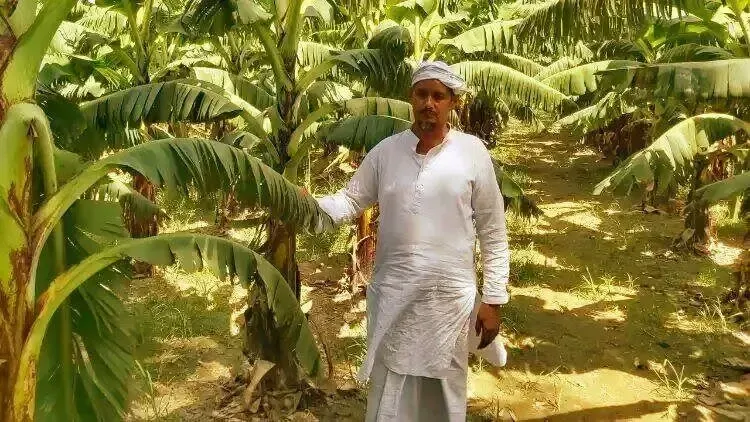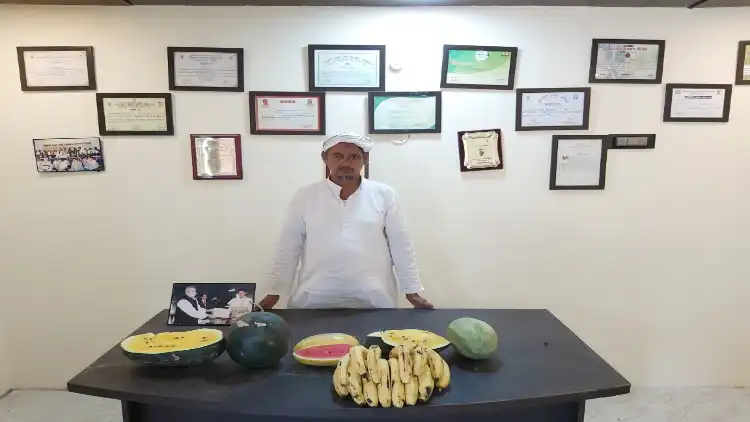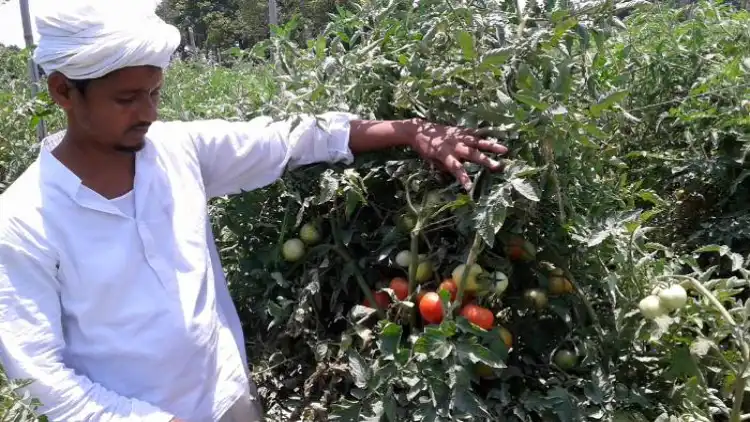
Ghaus Siwani, New Delhi
God surely helps those who help themselves: this is what Ghulam Mohammad of Jarwal village in Bahraich district of Uttar Pradesh did and his turnover from growing vegetables and fruits has touched Rs 4 crore.
Ghulam Mohammad was born poor and yet through sustained hard work and consistency in following the scientific advice and adopting new methods of cultivation, he has not only become a role model for others, he is also able to impart his knowledge and skills to other farmers.
He started his farming 30 years ago with just 5 acres of land; today he cultivates more than 20 acres. The bananas, tomatoes, melons and watermelons grown in his field are sent to markers in Hyderabad, Bengal, and up to Kathmandu.
Ghulam Mohammad had to give up his schooling after passing the eighth class. He became a clerk with village Panchayat and was happy earning Rs 6,500 per month. Some 30 years ago, one day he lost the job; as such he was married at the age of 18 and was responsible for providing for his family too.
He took to farming and started experimenting with crops and new methods of cultivation. First of all he stopped cultivation of traditional crops like wheat and paddy and switched over to growing vegetables. He came to know about drip irrigation technology and started using it for growing fruits too.

Ghulam Mohammad showing his crops at an exhibition
His first breakthrough came 11 years ago when he invested Rs 5,000 on planting bananas and using drip irrigation he earned Rs 40,000 from the crop. There was no looking back for him and he kept experimenting with other fruits and earned good money.
Today, Ghulam Muhammad is a familiar name not only among other farmers in Bahraich but even the agricultural scientists of many districts of Uttar Pradesh.
Ghulam Mohammad cultivates bananas, tomatoes, sugarcane, watermelons and melons using drip technology in his village located about 70 km from capital Lucknow.
Interestingly, he is also teaching new farming techniques to other farmers. By looking at the crops grown in Ghulam Muhammad's fields in a modern way, other farmers learn how to grow more crops on less land.
Ghulam Ahmad and his 11-member family enjoys a good standard of life and he also takes care of all members of his extended family who are poor and many members jobless.
He has also started a large chicken farm.
Ghulam Muhammad follows the advice of agricultural scientists while planting a crop. These days, he is giving lectures to farmers in his area on how to make good profits by using new technology in agriculture.
Ghulam Muhammad, a role model for farmers in Bahraich district, has been awarded the Ideal Farmer Award by the Uttar Pradesh governor for his technical farming and unparalleled crop production, despite his limited resources.
He organises awareness camps for training other farmers. Farmers and agricultural officials from across the country frequently visit Ghulam Ahmed's fields to see how he optimises resources for maximum yield and profit from the land.

Ghulam Muhammad proudly shows his tomato crop
He says tomato production increases dramatically with the help of drip irrigation. Ghulam Muhammad now also uses Android phones to get weather information and plan his activities in the field.
Drip irrigation is becoming a popular method of irrigation as it reduced the use of water and also saves plants from being overwatered and conservation of fertilizer. In this method, drops of water are poured on the roots of the plants. Valves, pipes, tubes, etc. are used for this purpose. Drip irrigation is also called 'drop-drop irrigation'.
Water is fed very slowly to the plant. Drip irrigation can increase the production of fruits, vegetables and other crops by 20 to 50 percent. It also saves 30 to 60 percent water. By adopting this technology, the problem of uneven, dry, barren, low water levels can be tackled. Though all kinds of land can be used -for farming. Fertilizer can also be given through water.
In conventional irrigation, most of the water evaporates or is lost without the plant getting time and chance to absorb it. Therefore, in order to use the available water properly and efficiently, it is necessary to have an irrigation system through which the inflow of water is minimized and maximum water is available to the plant. The use of drip irrigation methods also reduces time and labor cost.
